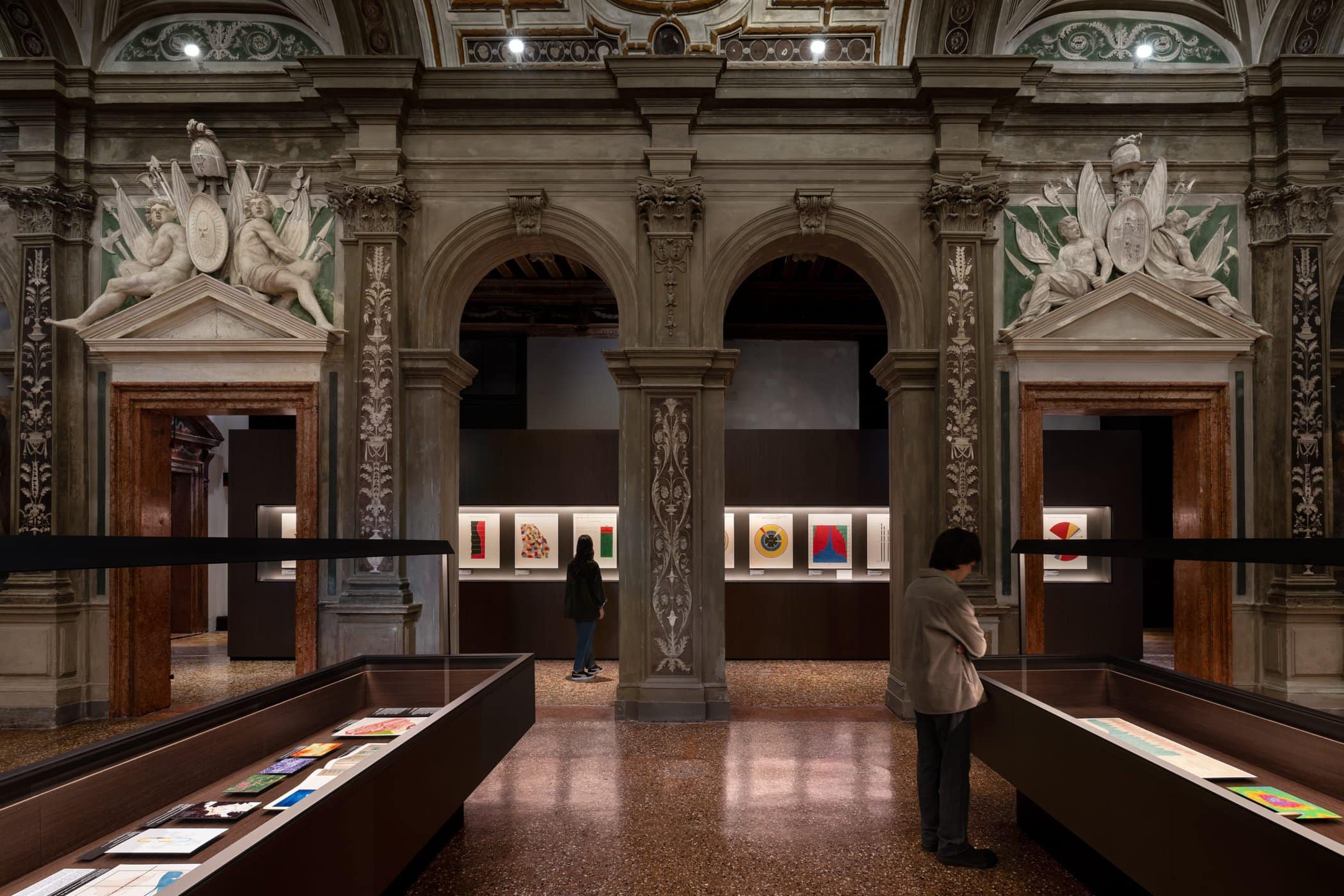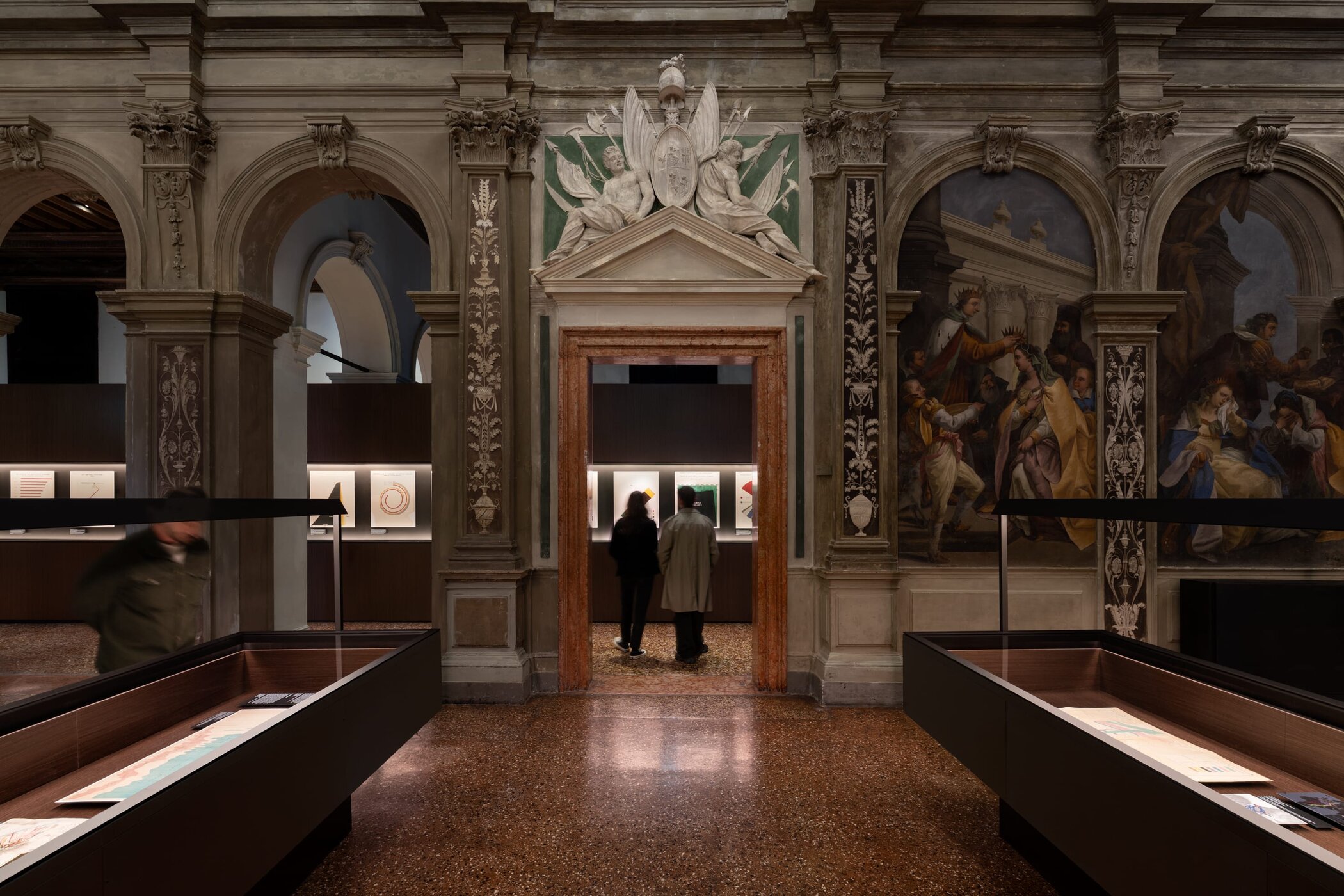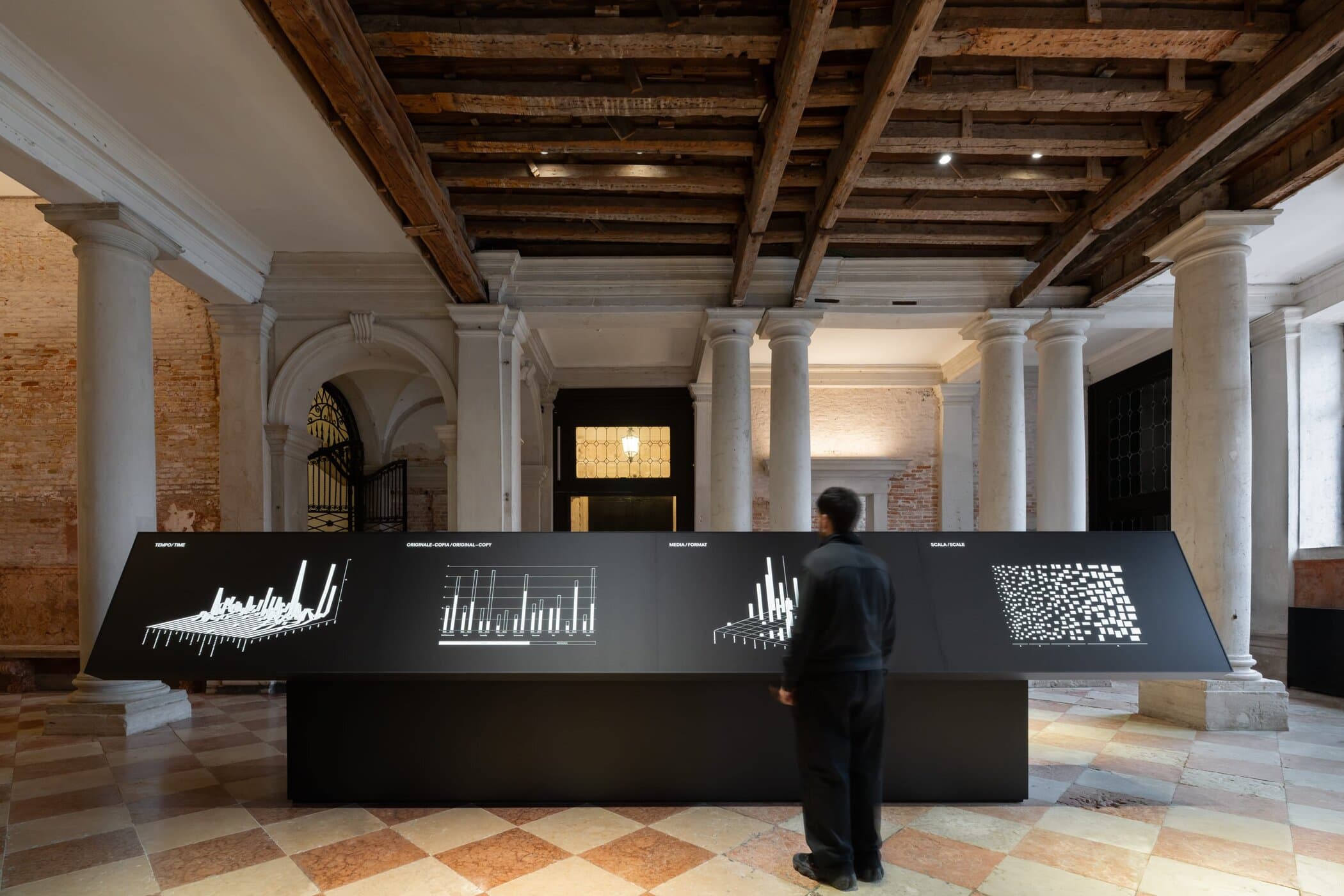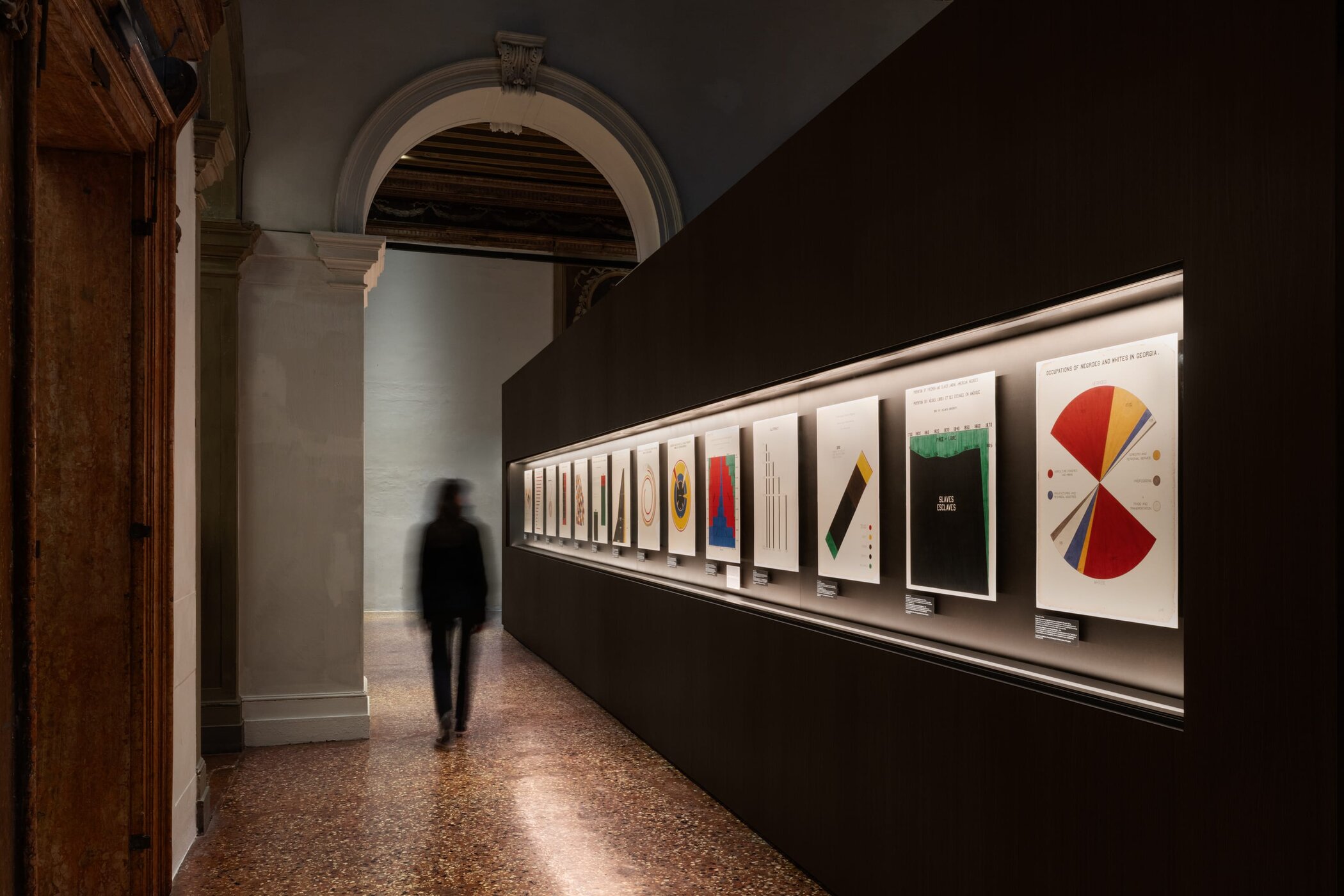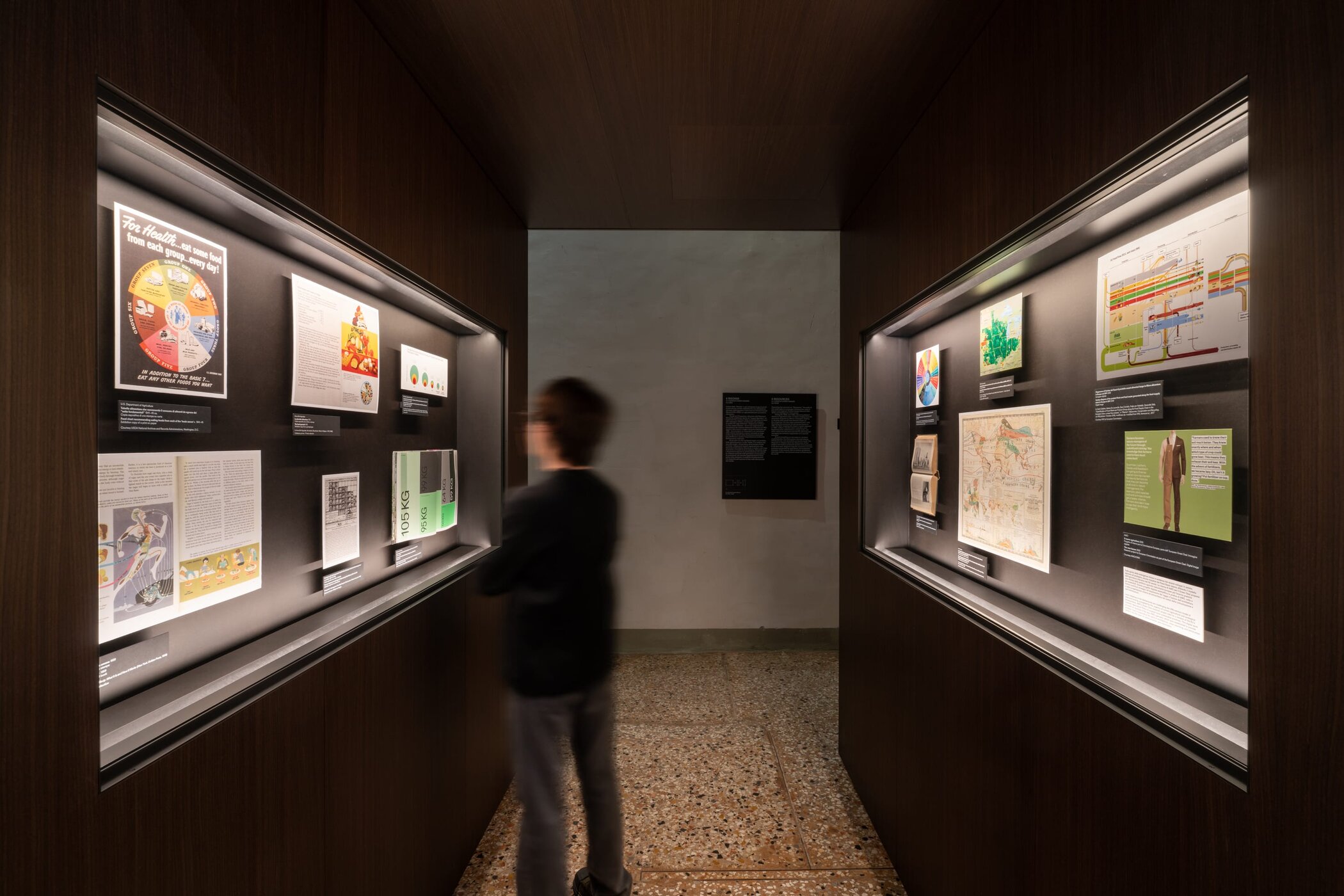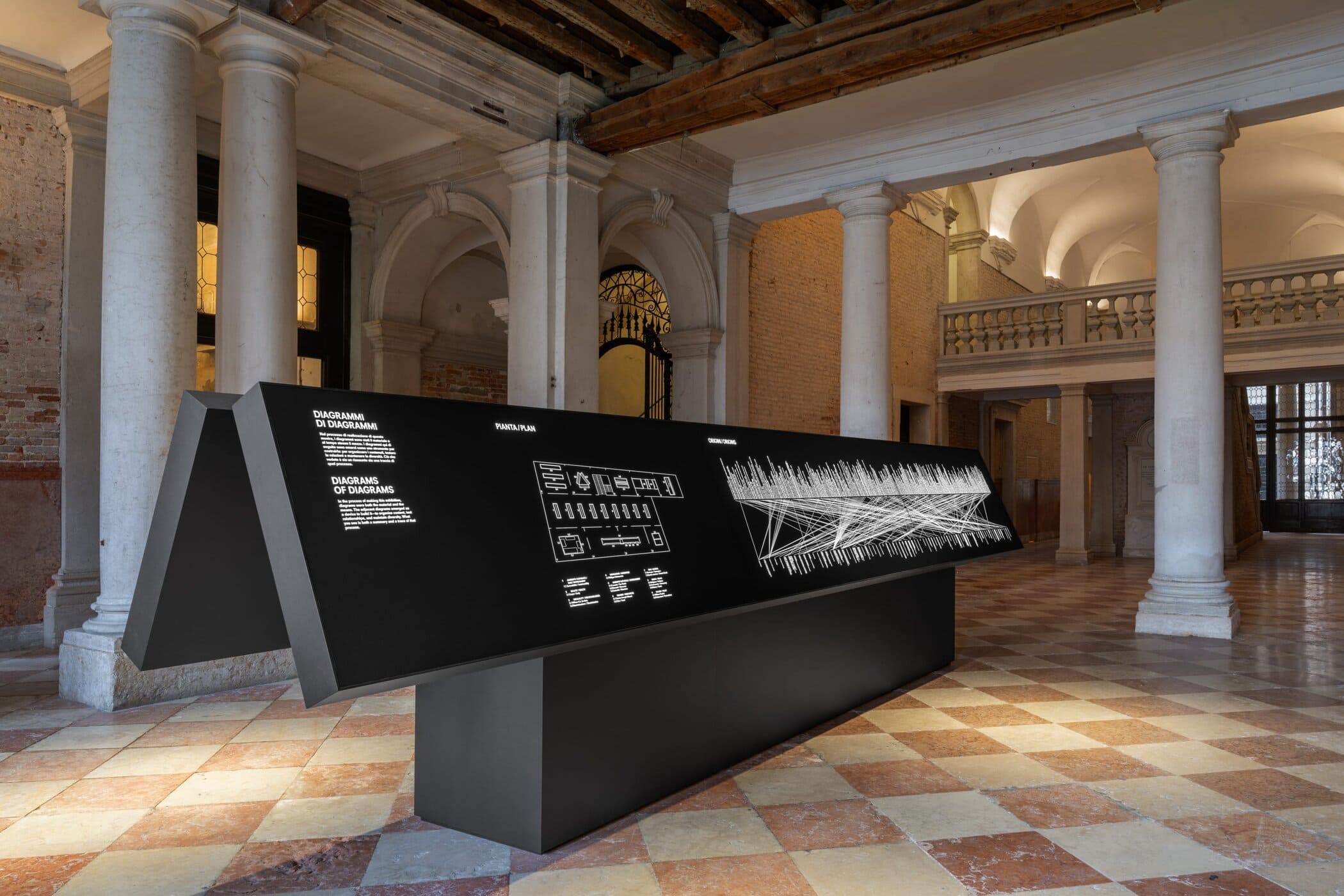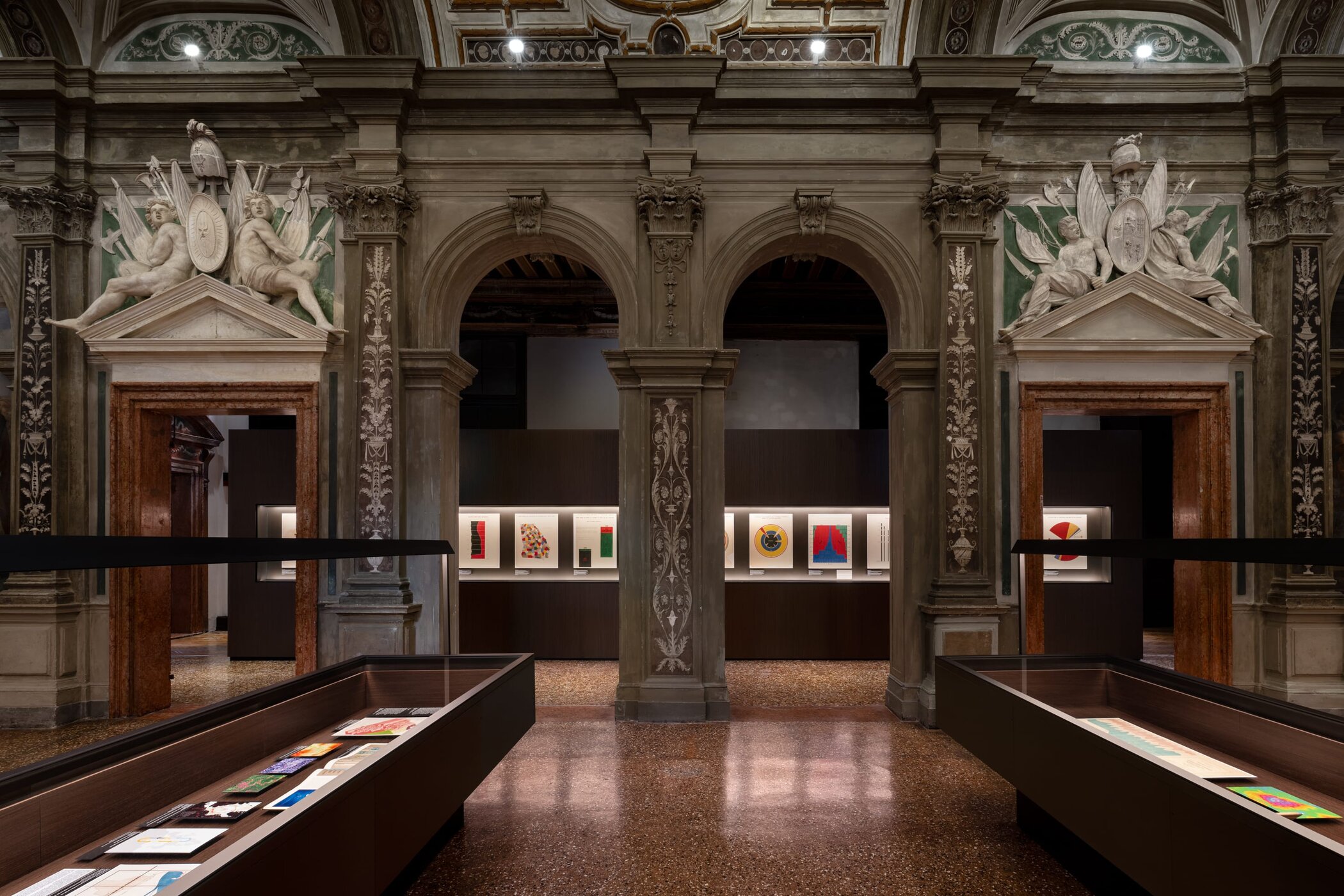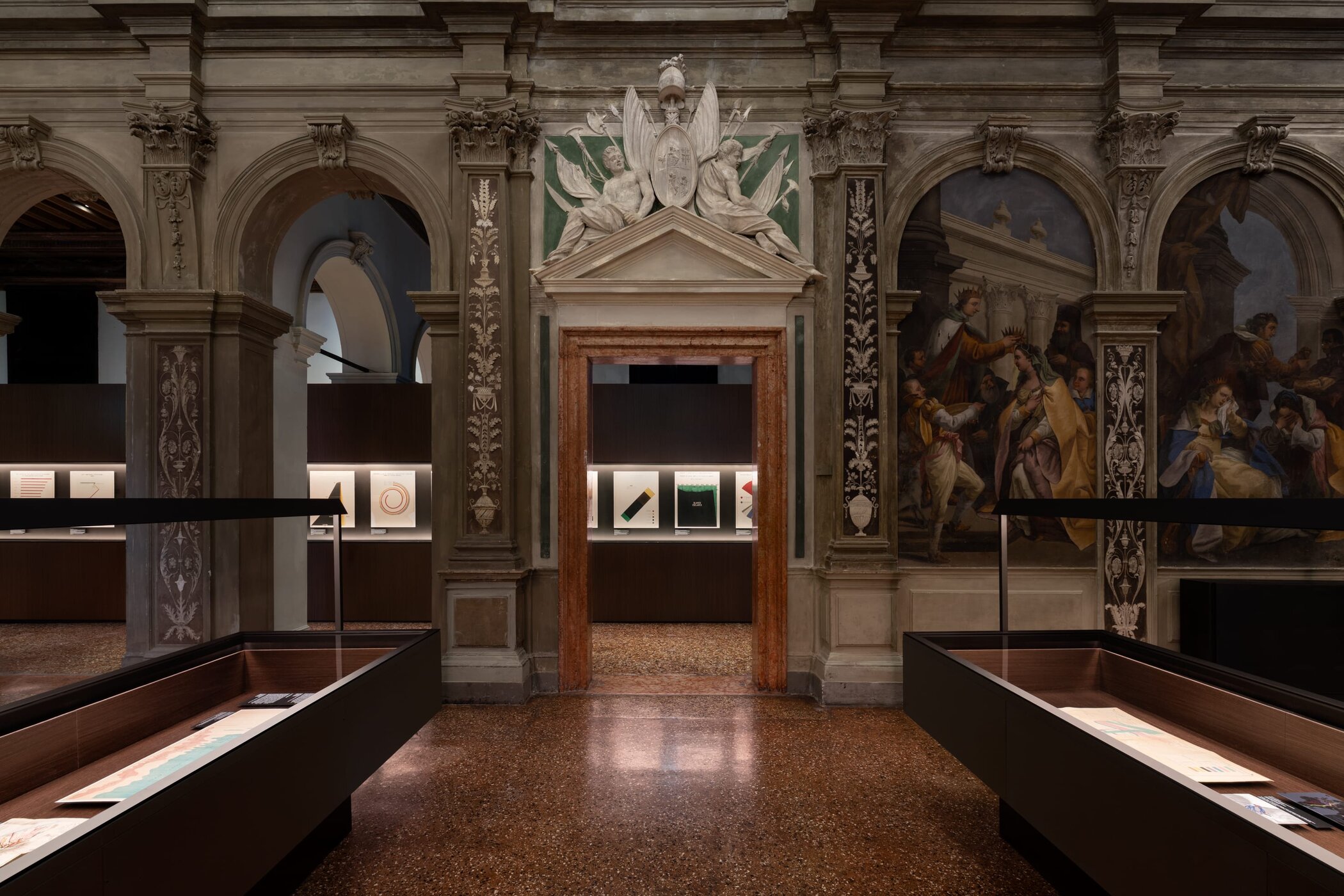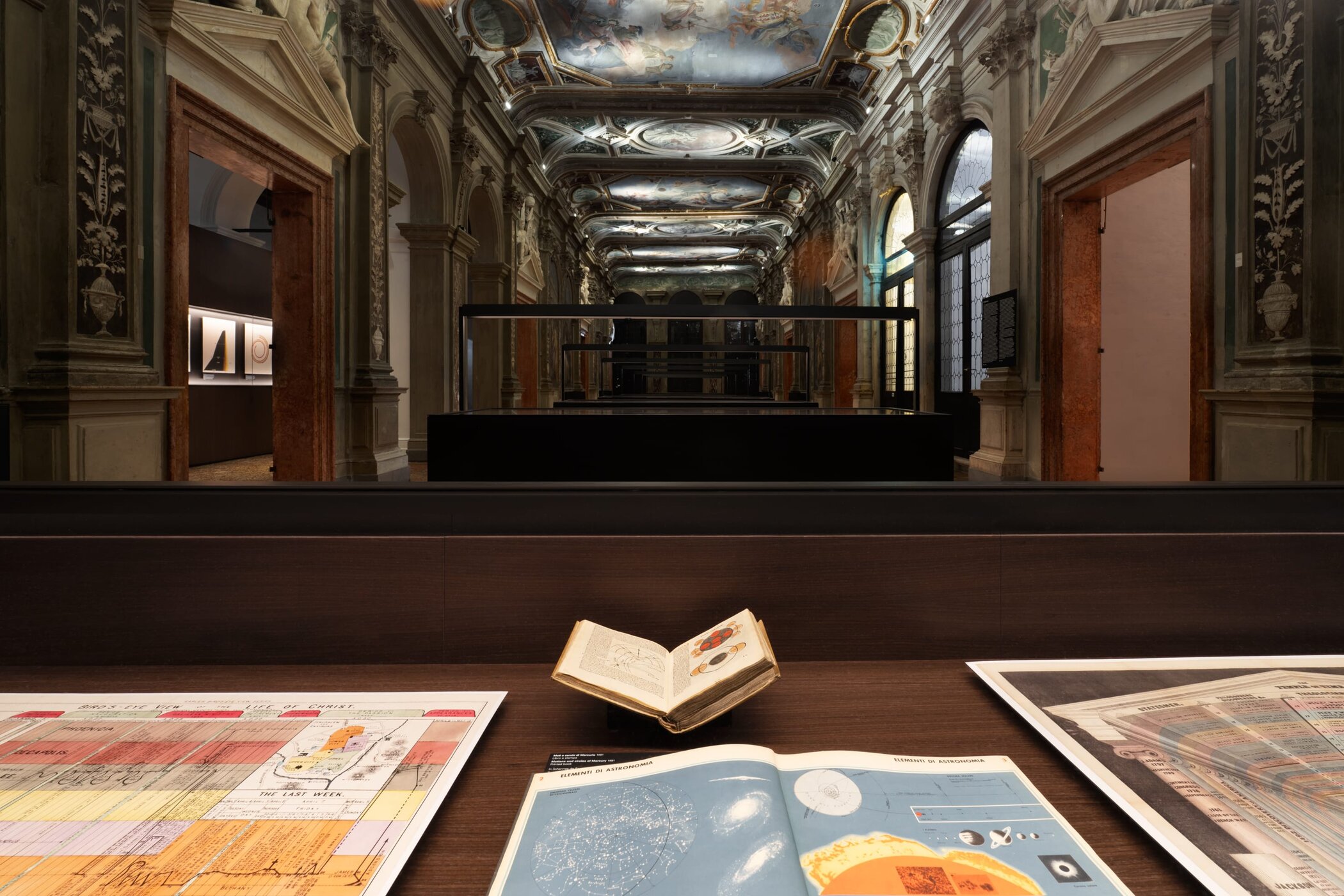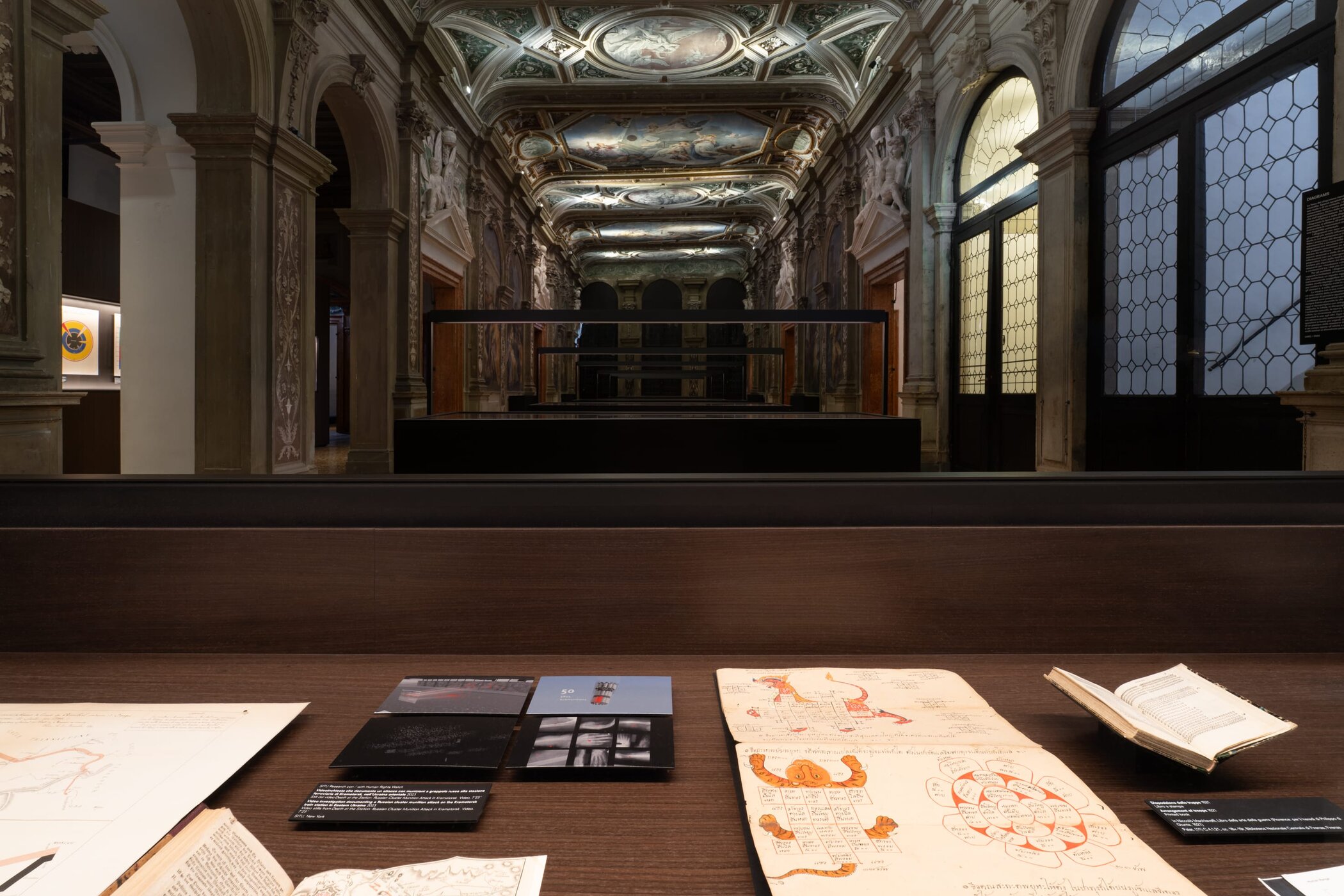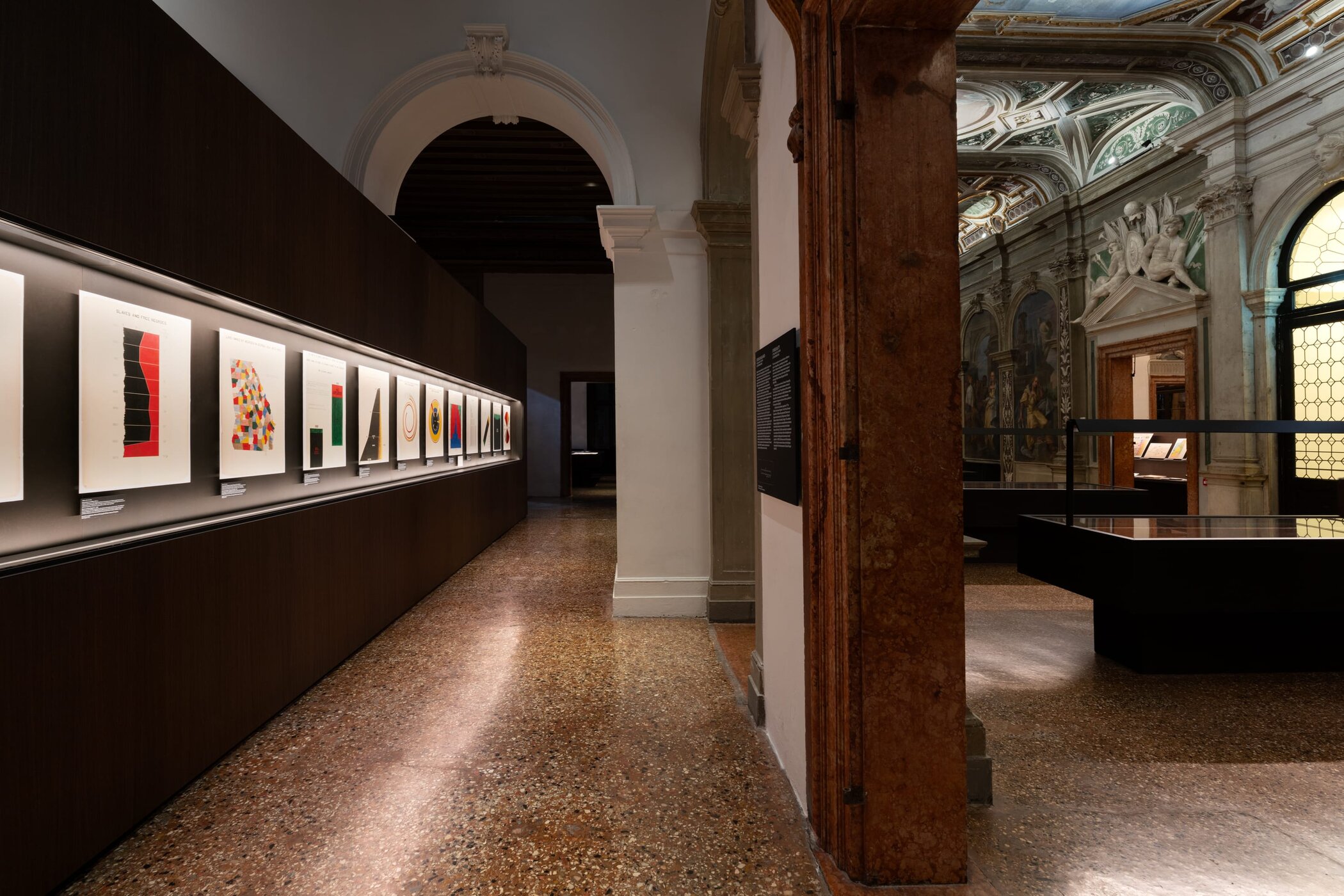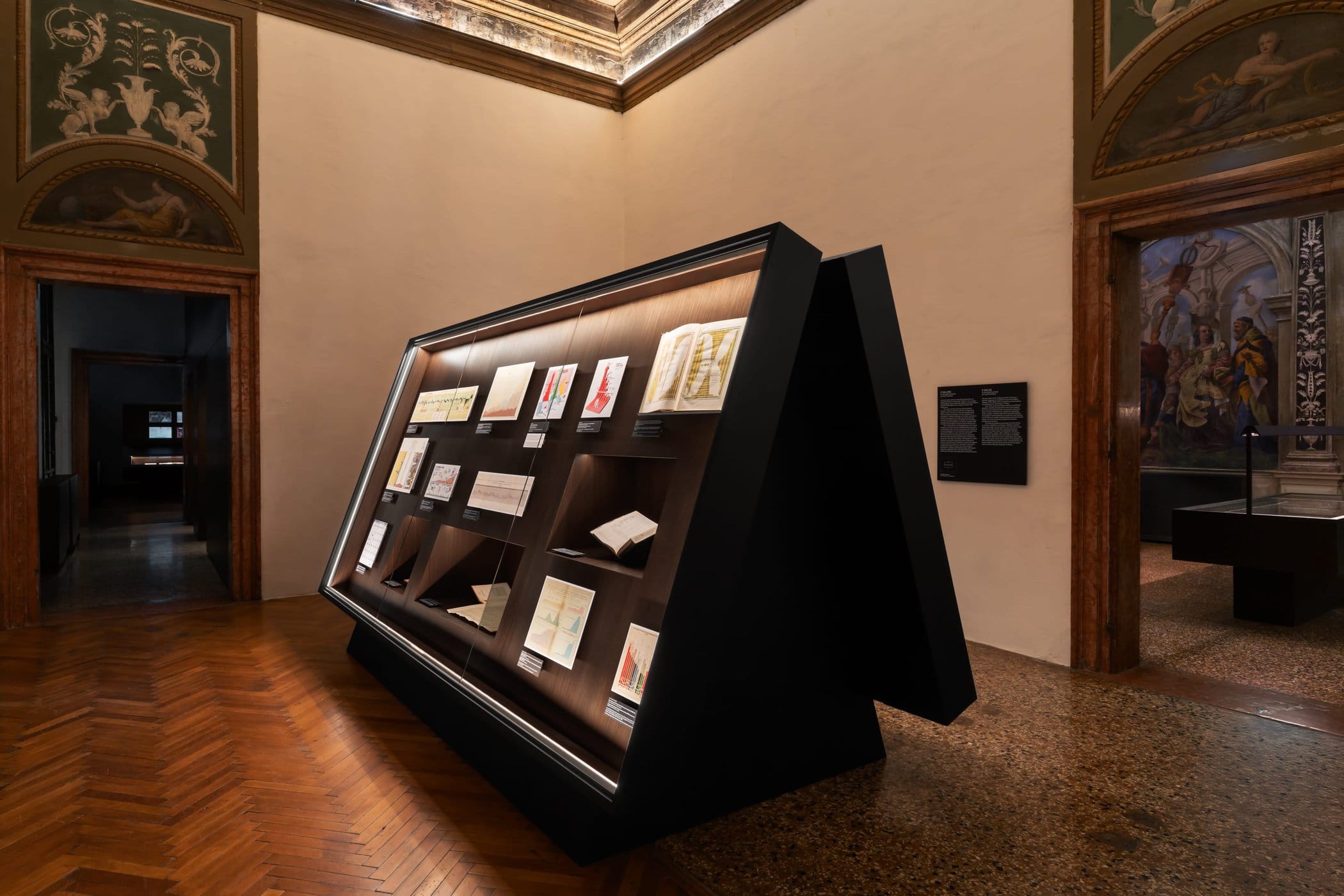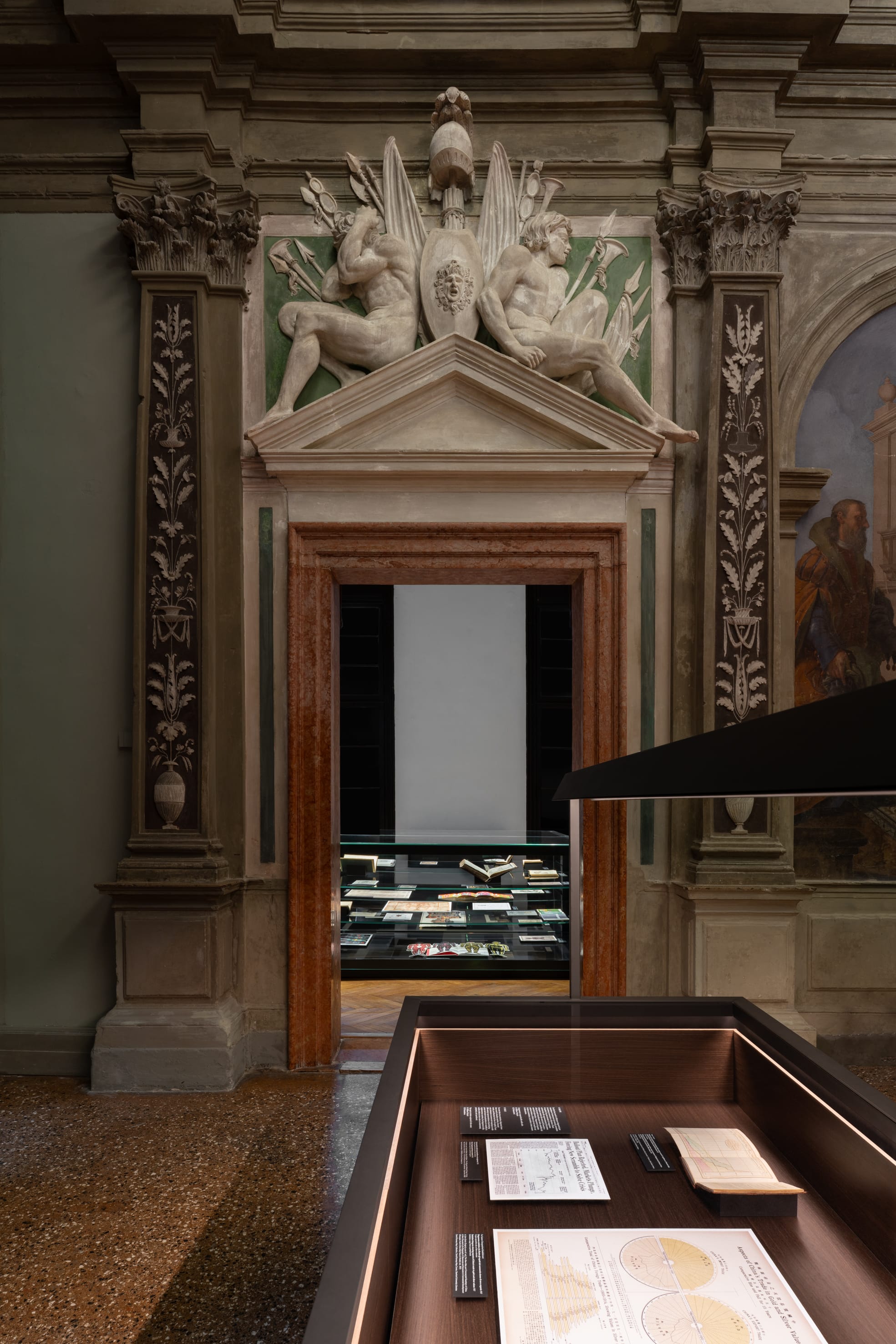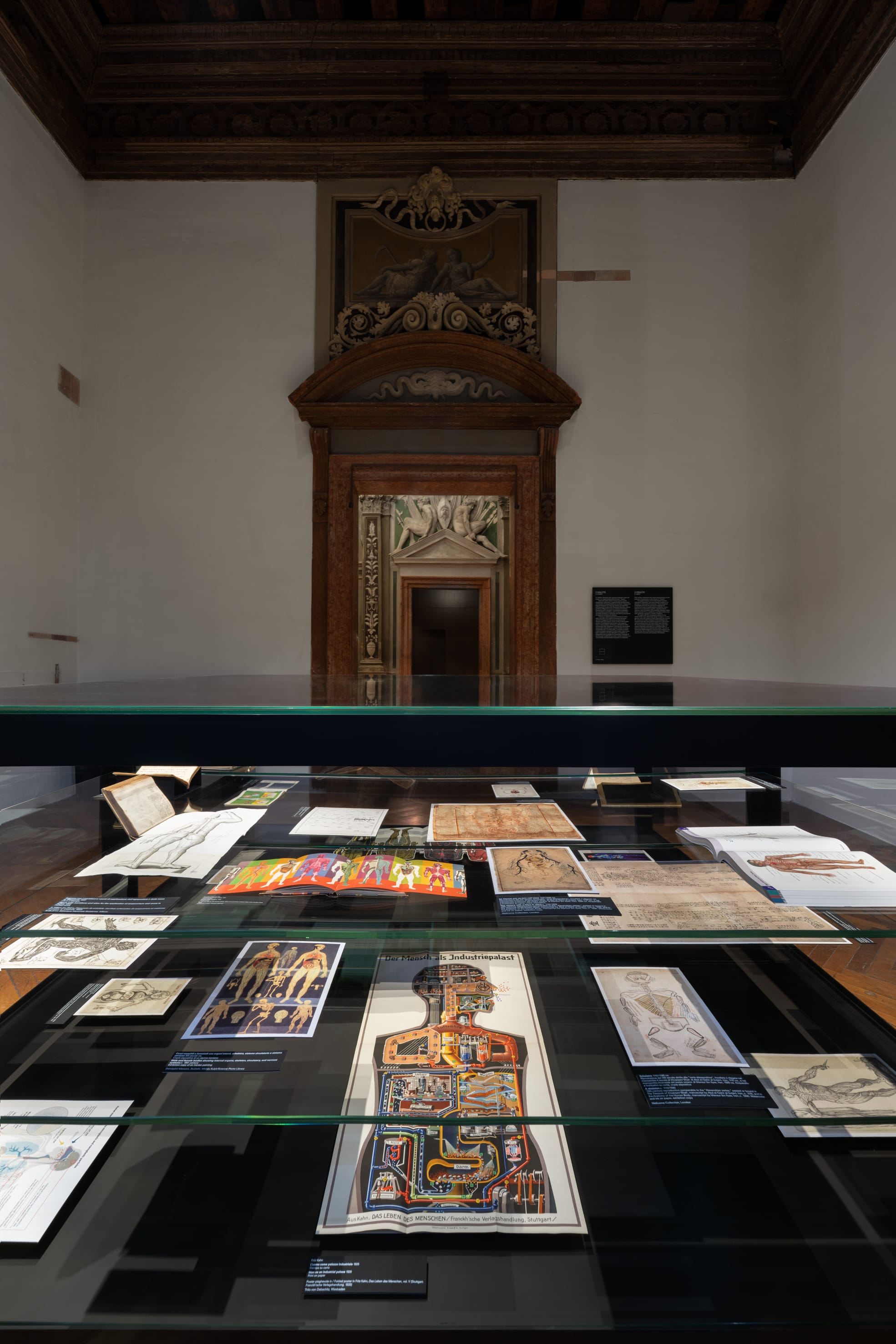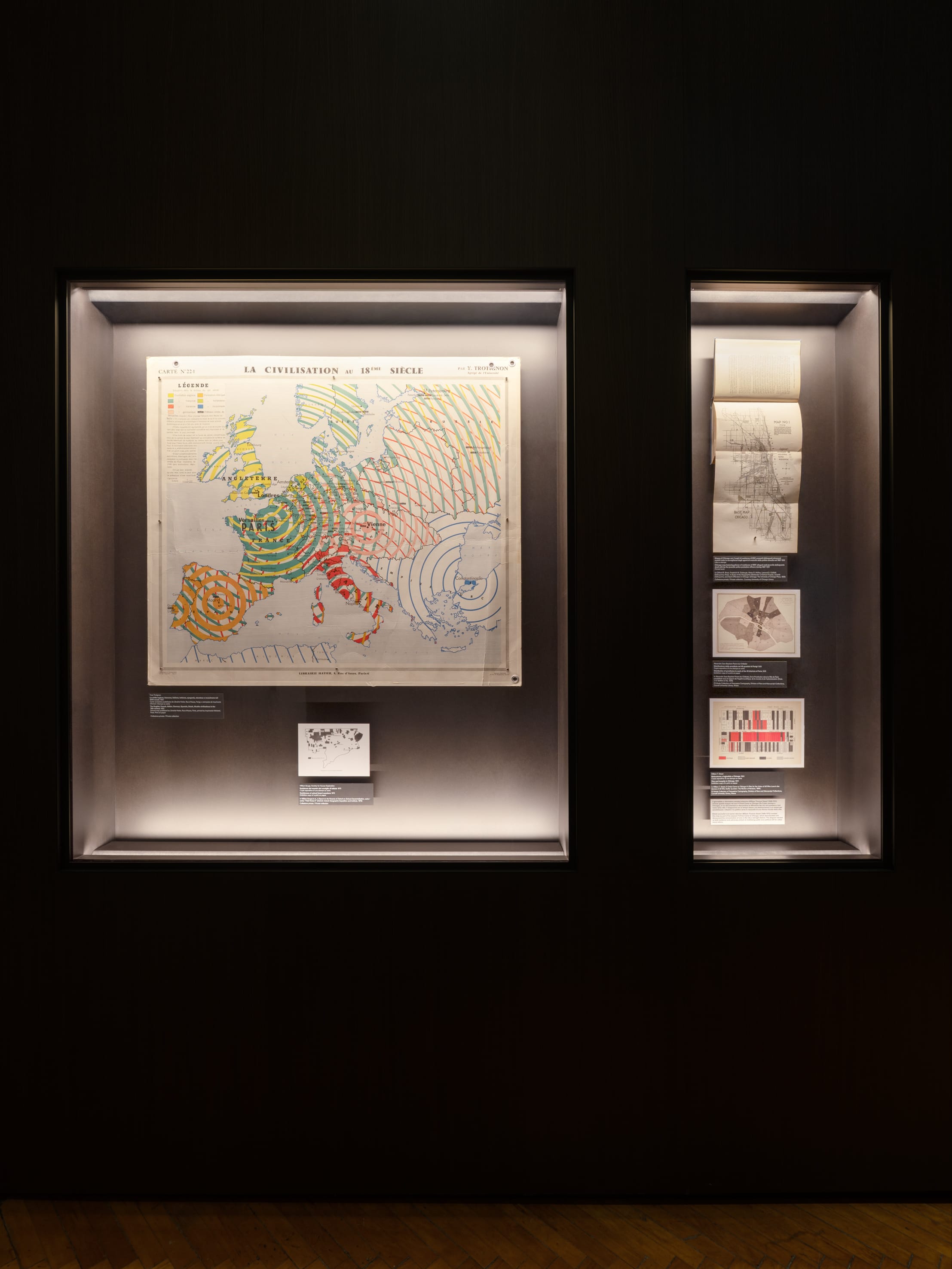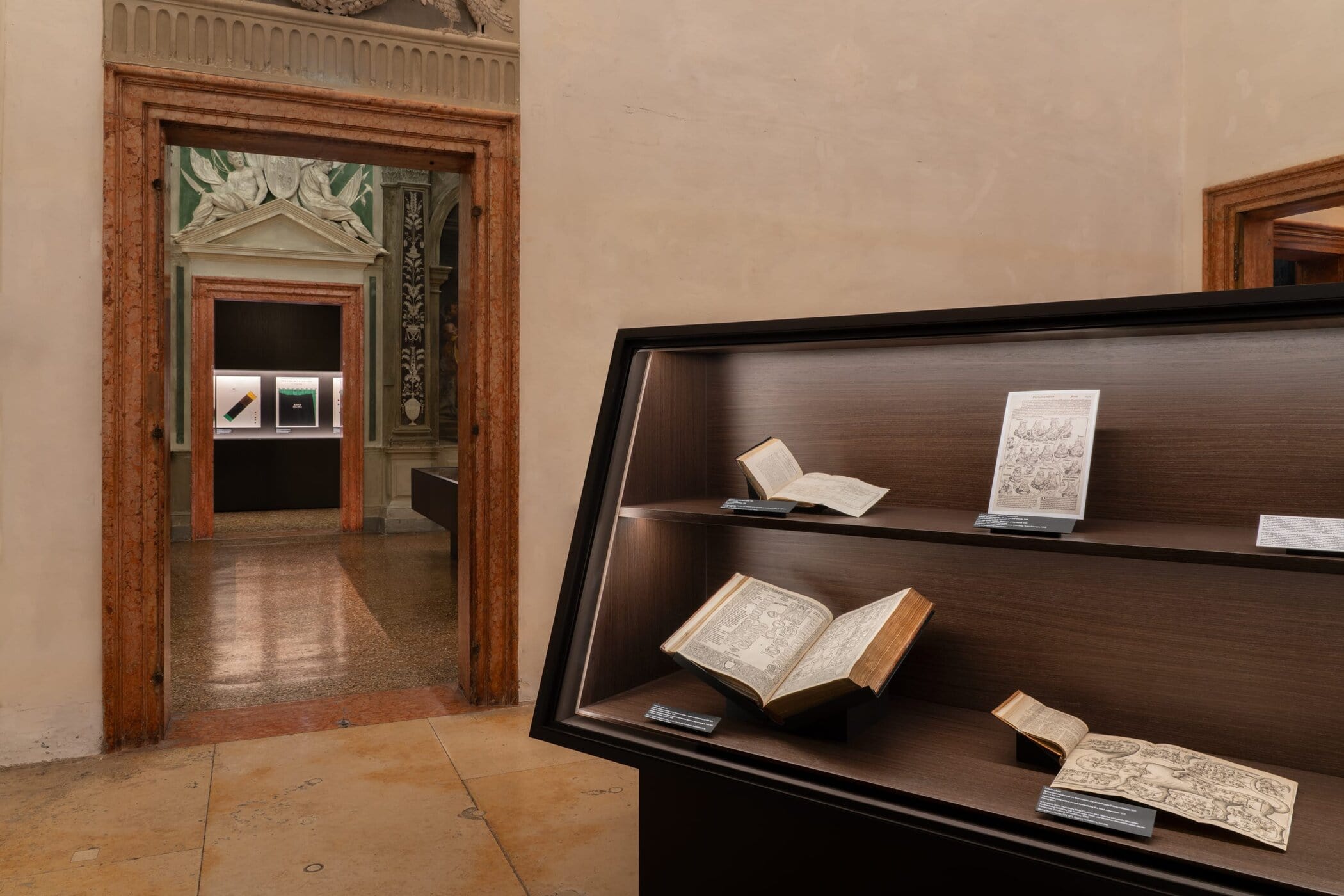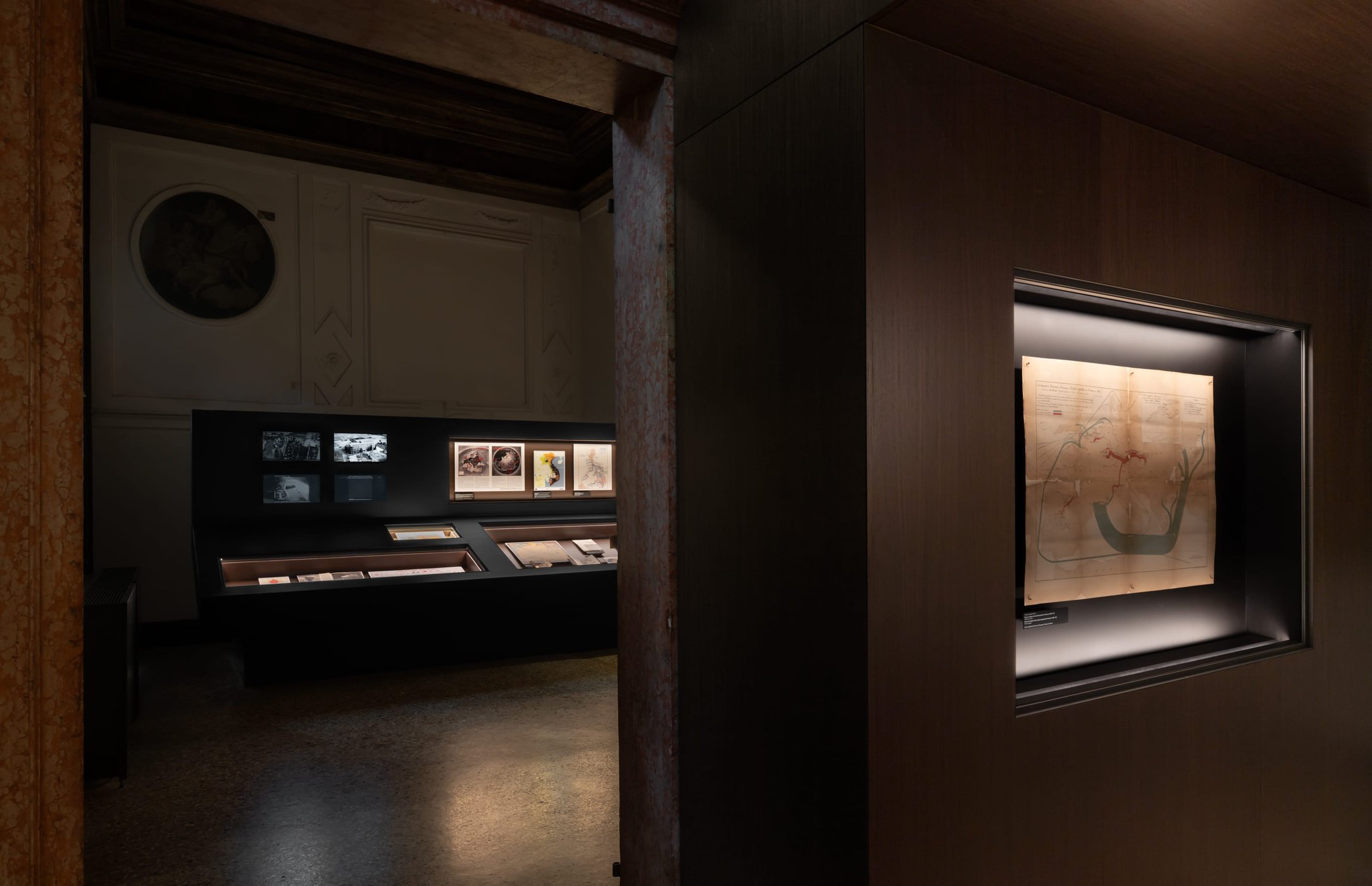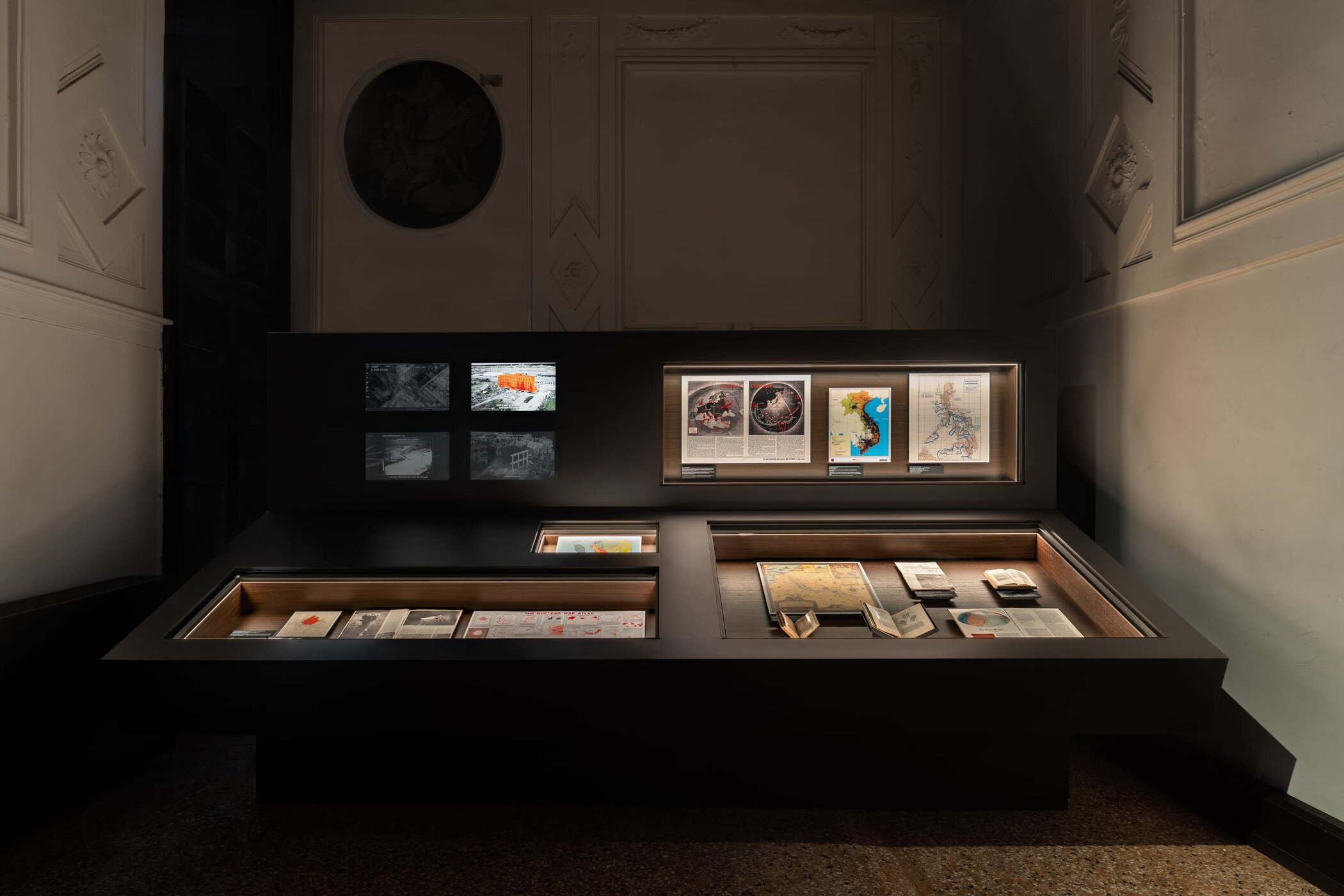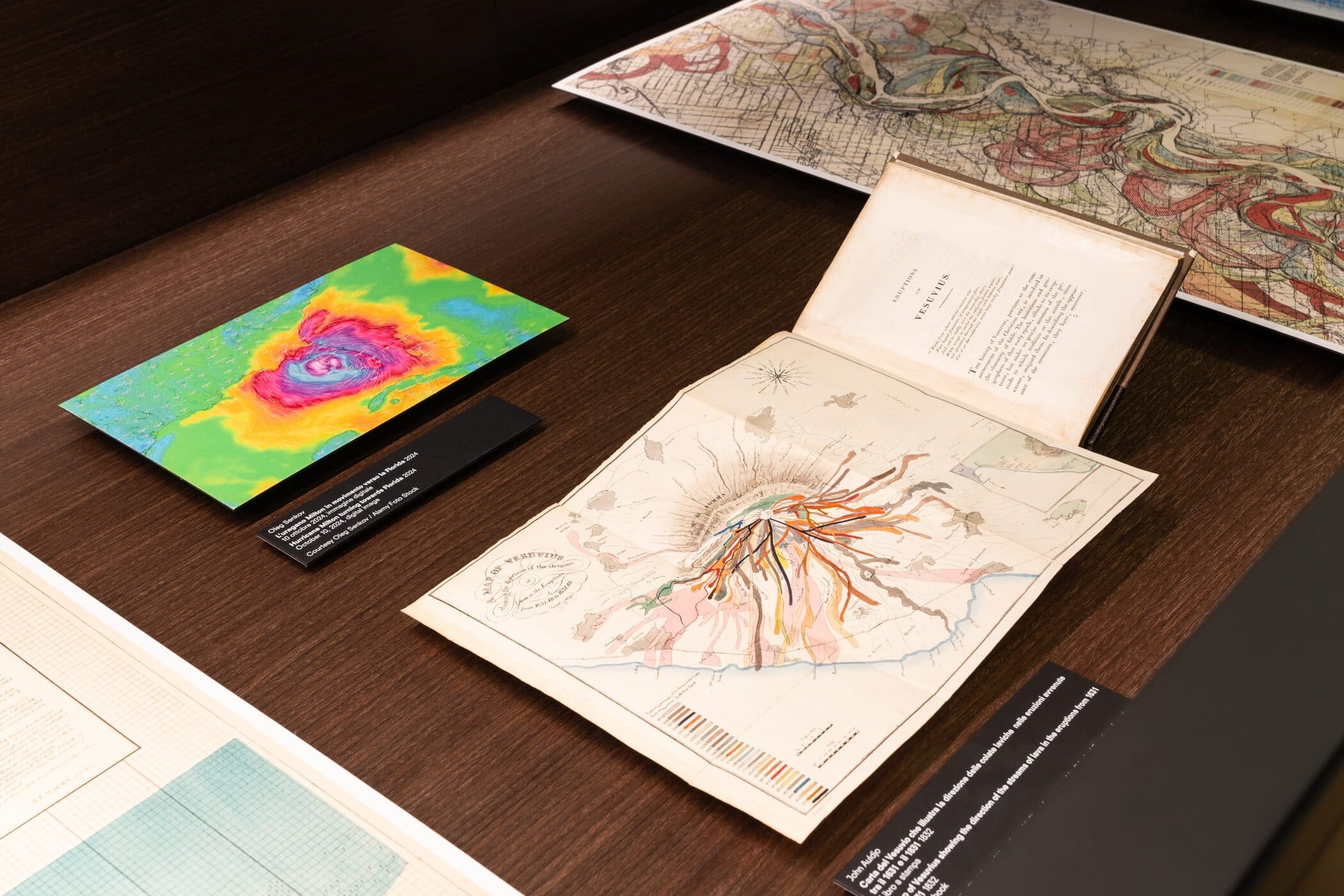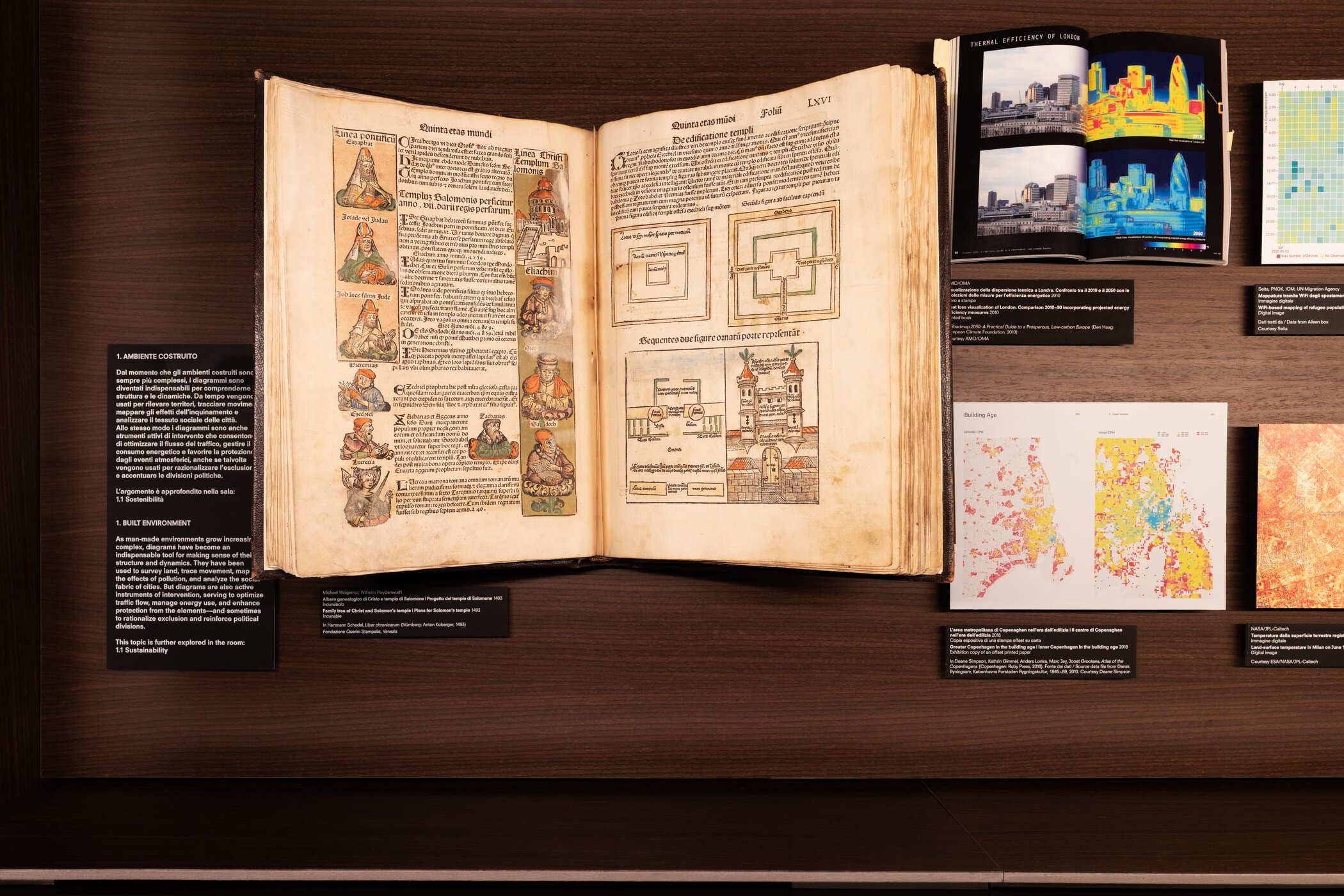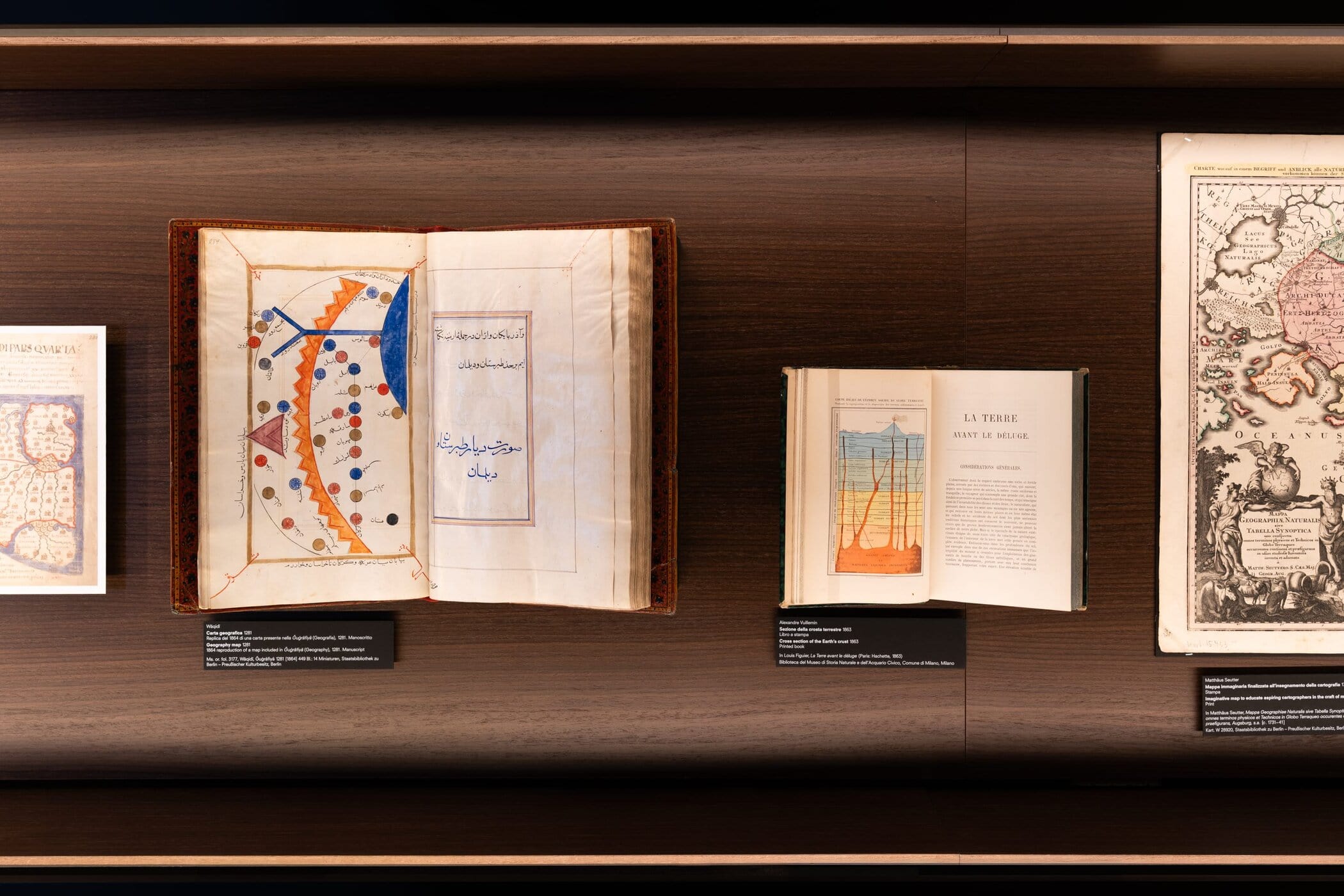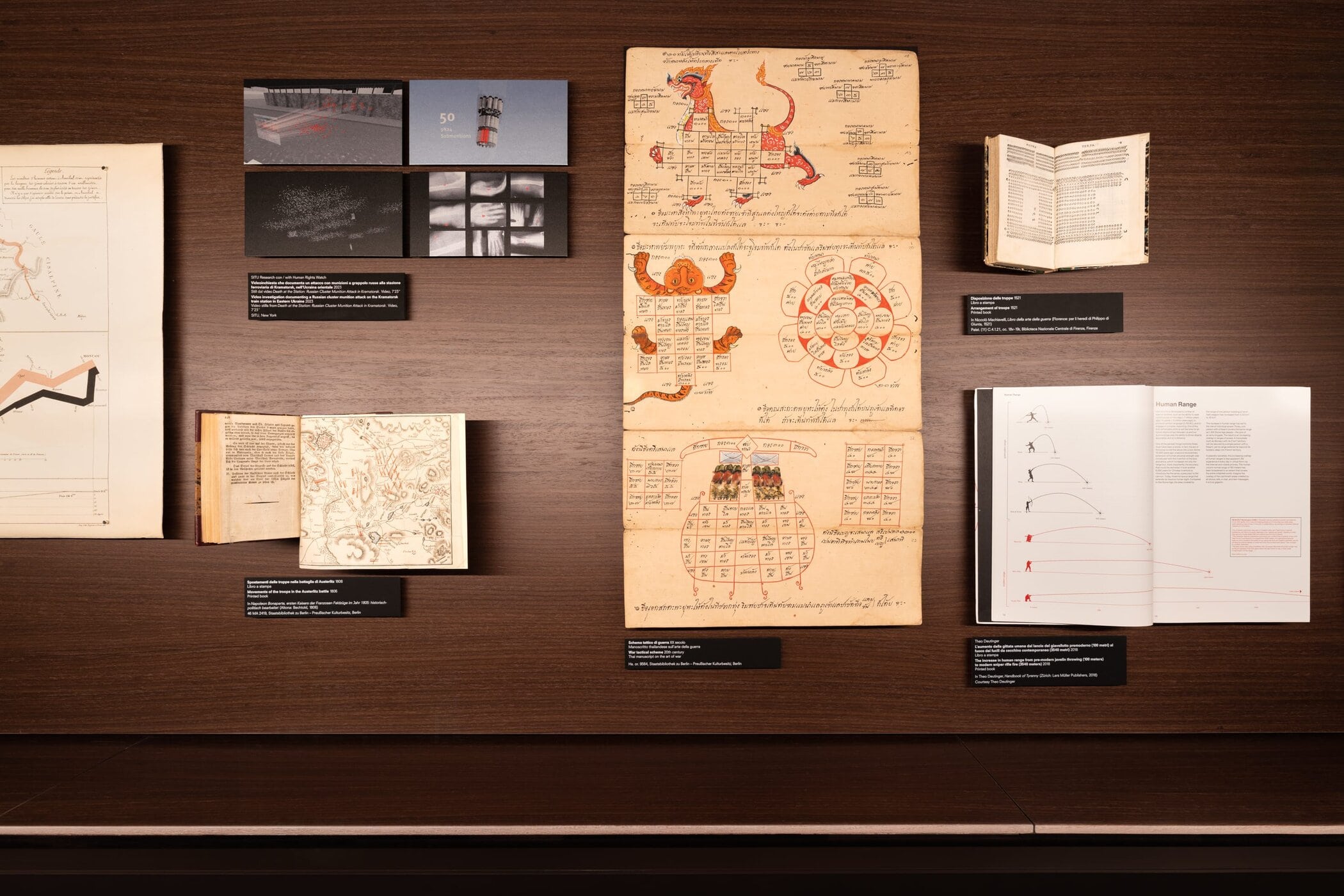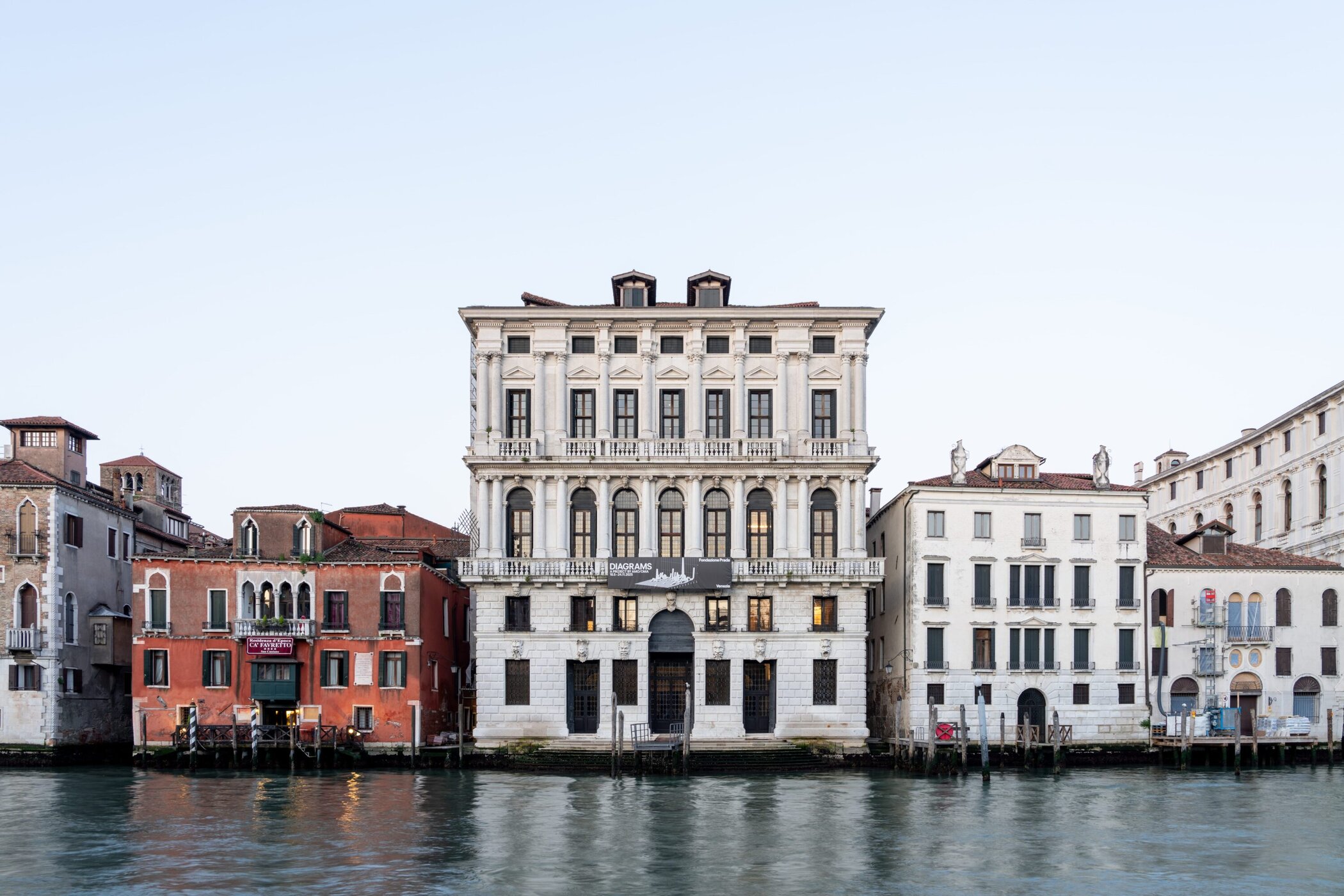Curated with Rem Koolhaas and AMO/OMA, the exhibition examines global urgencies through the lens of diagrams
Fondazione Prada‘s “Diagrams” explores the diagram as a vital tool for shaping understanding, meaning, and even manipulation. On view across the ground and first floors of the 18th-century Palazzo Ca’ Corner della Regina, the exhibition presents over 300 items—ranging from 12th-century manuscripts to contemporary videos—demonstrating the diagram’s long-standing influence across cultures and disciplines.
Through this lens, the exhibition investigates how visual data representation intersects with human intelligence, scientific thought, and the production of knowledge. Thematically organized, the works highlight both contemporary global issues and the diagram’s historical adaptability.
Developed by Fondazione Prada in collaboration with Rem Koolhaas and Giulio Margheri of OMA, with key scholarly input from Sietske Fransen of the Max Planck Institute for Art History, the project draws on extensive interdisciplinary research.
“In my view, the diagram has been an almost permanent tool,” said Koolhaas. “In the early stages of our research, we discovered three-dimensional diagrams from South Africa dating back to 40,000 BCE, as well as wood-carved maps of the Greenlandic coastline made on the island of Ammassalik. This demonstrates that the diagram is an enduring form of communication that adapts to whatever medium exists at the time. Regardless of the medium, a diagram serves didactic (explanatory) or suggestive (persuasive) purposes. This means that it not only exists by default in any new medium but can also be applied to virtually any area of human life. Fashion, religion, or the history of social inequality can be interpreted as a diagram. I deeply enjoy this interdisciplinary aspect of the diagram, its invariable attribute—its independence from language (words) makes it one of the most effective forms of representation.”
The exhibition layout, conceived by AMO/OMA, follows the “now urgencies” principle and is anchored by nine key themes: Built Environment, Health, Inequality, Migration, Environment, Resources, War, Truth, and Value. These are introduced through a series of vitrines in the first floor’s central room and expanded upon in adjacent rooms, each offering deep dives into subtopics or individual contributors.
The ground floor features a set designed by AMO/OMA that functions as a meta-diagram—a visual map of the exhibition itself—revealing the curatorial framework and methodology with clarity.
A companion publication designed by Irma Boom and published by Fondazione Prada accompanies the show. It includes an introduction by Miuccia Prada, a conversation between Koolhaas and Katya Inozemtseva, and essays by noted international figures including Alberto Cairo, Kate Crawford, Theo Deutinger, Sietske Fransen, Scott Reinhard, Philippe Rekacewicz, Sandra Rendgen, Malkit Shoshan, and Kohei Sugiura.
